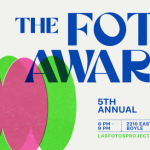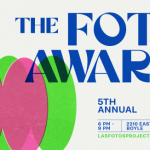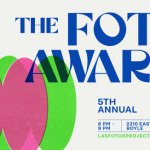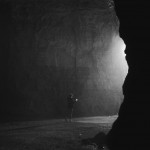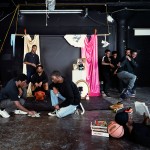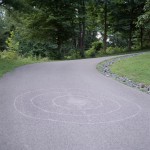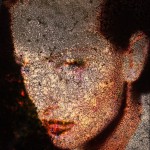The Center Awards: Director’s Choice 3rd Place Winner: Maria Sturm

©Maria Strum, Daniel, Daniel in front of his parents house in St. Pauls. Daniel identifies as Lumbee. Pre-Colonization there were several tribes inhabiting the same area, the Cheraw, the Tuscarora, the Haliwa-Saponi, the Cherokees to name a few. You can find three native language families: Algonquian, Siouan and Iroquois, which suggest migration due to wars, climate change etc. All these tribes weren‘t recognized. In an attempt to gain federal recognition the Lumbee name was voted for in 1952 (and passed legislation in 1953) to unite all tribes living in and around Robeson County. The idea was to form a conglomerate, so the BIA (Bureau of Indian Affairs) wouldn‘t ignore such a large group of people in their petition for recognition. The tribe petitioned again for federal recognition, which failed because the BIA stated the Lumbees exist only since 1953 and therefore it couldn’t be proved they existed before 1492.
Congratulations to Maria Sturm for her Third Place win in CENTER’S Director’s Choice Award for her project, You Don’t Look Native to Me. The Choice Awards recognize outstanding photographers working in all processes and subject matter. Images can be singular or part of a series. Winners receive admission to Review Santa Fe portfolio reviews and participation in a winner’s exhibition at Pictura Gallery in Bloomington, IN.
Monica Allende, Artistic Director, Getxo Photo and Independent Curator shares her insights:
I have been very impressed by the overall quality of the submissions. The works represented a wide range of visual narratives, conceptual perspectives and thought processes. It was inspiring to see stories artistically reframing topics at the core of human inquiry and quotidianity contributing to their originality.
The winner “The Maria Project” by Lesia Maruschak is a visual response to the Holodomor in Ukraine where millions died of famine in 1932-33 following the implementation of Stalin’s agricultural policies. Maruschak’s work reflects on the visual memory of history, and the role of the artist in the decolonization of narratives which are critical issues in photography debate.
It has been an enriching experience to discover previously unknown works which are now firmly included in my knowledge vault.
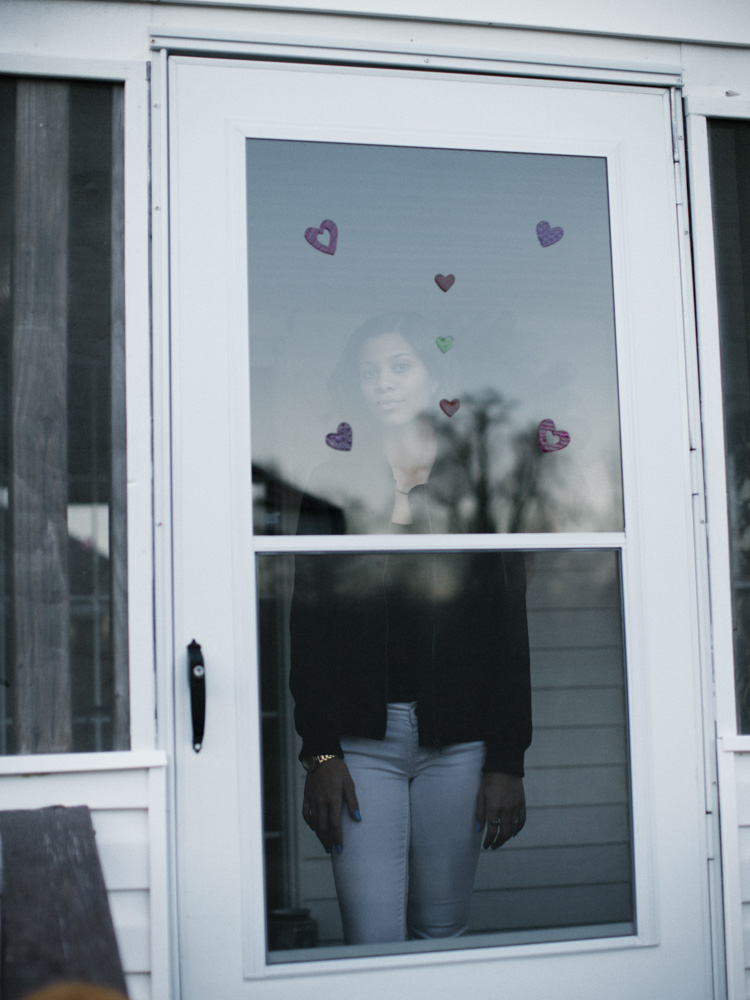
©Maria Strum, Dominique, Dominique is half Lumbee half Guamanian. She‘s regularly attending the Culture Class and participating in Powwows as a Jingle dancer. Here she is in her house in Red Springs.
Monica Allende is an independent curator, consultant, strategist and educator. She is the Artistic Director of GetxoPhoto Photo Festival and Landskrona Foto Festival she has collaborated with WeTransfer as a Creative Producer and Consultant, she was the director of FORMAT17 International Photography Festival, she collaborated with Screen Projects and is producing and curating several multidisciplinary projects with artists and digital platforms worldwide.

©Maria Strum, Patricia, Mescal and Frankie in front of their house in Pembroke. Mescal is 19, she has two daughters Kassidy (4) and Frankie, who‘s just a few months old. Patricia (15) is Mescal’s cousin. Mescal’s father Reggie is leading the Culture Class in town, led by The Lumbee Tribe of North Carolina. Their mission is to inspire youth in Indian Country, through cultural enlightenment, to realize their full potential regardless of their circumstances and to become caring, responsible tribal members.
You don‘t look Native to me
“You don‘t look Native to me“ is a quote and the title of a body of work, that shows excerpts from the lives of youngNative Americans from around Pembroke, Robeson County, North Carolina, where 89% of the city’s population identifes as Native American. Te town is the tribal seat of the Lumbee Indian Tribe of North Carolina, the largest state-recognized Native American tribe east of the Mississippi River, which means they are federally unrecognized and therefore have no reservation nor any monetary benefts.
I am tracing their ways of self-representation, transformed through history, questions of identity with which they are confronted on a daily basis, and their reawakening pride in being Native. Te work consists of portraits, along with landscapes and places, interiors, still lives, and situations. Te aesthetic framework that is presented ofers clues – sometimes subtle, sometimes loud – for imparting a feeling for their everyday lives.
My work engages an unfamiliar mix of concepts: a Native American tribe whose members are ignored by the outside world, who do not wear their otherness on their physique, but who are frm in their identity. Trough photography, video and interviews, I am investigating what happens when social and institutional structures break down and people are forced to rely on themselves for their own resources. Tis raises questions to the viewer regarding one’s own identity and membership to the unspecified mainstream.
This work was started in 2011.
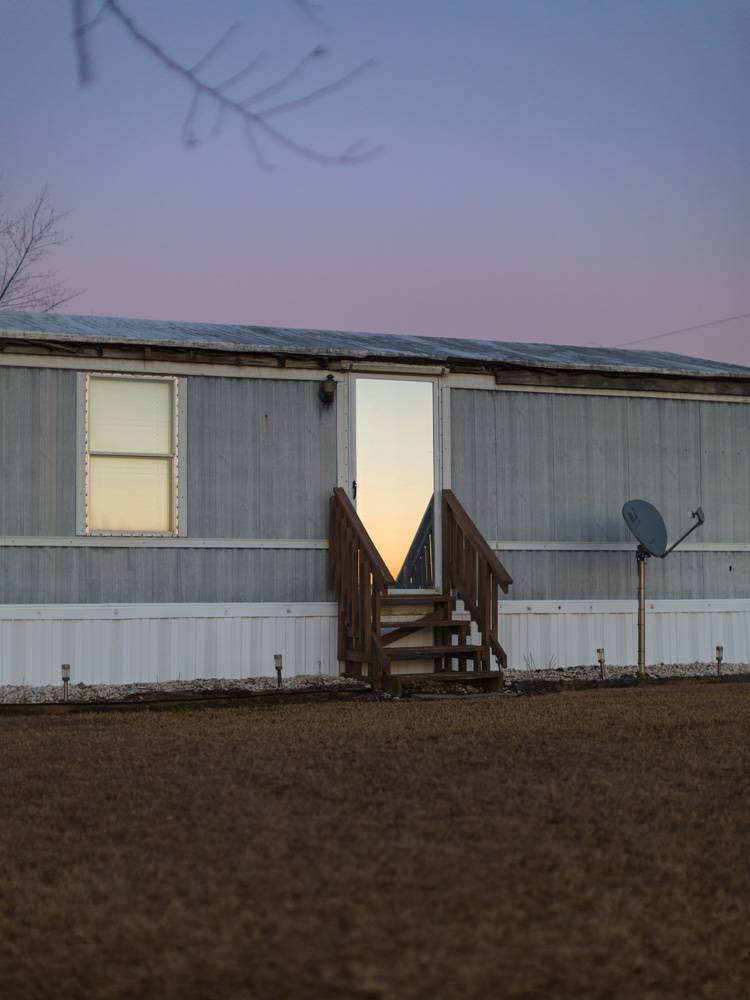
©Maria Strum, Reflection #2, Pembroke in Robeson County is the economic, cultural and political center of the Lumbee Tribe of North Carolina, which sought full federal recognition from the United States Government since 1888. It is the largest tribe in North Carolina, the largest tribe East of the Mississippi River, and the ninth-largest in the nation. Robeson County has a population of 134,576 people with a median age of 35.6 and a median household income of $31,298. Robeson county is the poorest and most violent county in North Carolina. Between the 90s and the 2000s most of the industry had left (e.g. Converse in Lumberton, where many Lumbee People worked).
Romanian photographer Maria Sturm (1985) frst studied photography at the University of Applied Sciences Bielefeld, Germany before completing her MFA in Photography at the Rhode Island School of Design as a Fulbright and DAAD scholar.
Her most recent work “You don’t look Native to me” about the unrecognized Lumbee tribe of North Carolina has won the PHmuseum Women Photographers Grant, Center Santa Fe Directors Choice Award, the Royal Photographic Society Award and the SPE Award for Innovations in Imaging.
It was shortlisted for Palm Photo Prize, PhotoLondon La Fabrica Book Dummy Award, PhotoLux Dummy Award, Kassel Dummy Award and made the 2nd place at Unseen Dummy Award. It was published in British Journal of Photography, Refnery29 and Lensculture and exhibited in the German Consulate New York, Clamp Art New York, Wiesbadener Fototage, Encontros da Imagem, at Artists Unlimited Bielefeld, Addis Foto Fest, Photo Vogue Festival, Manifesta 12, Wonder Foto Day Taipei, Format Festival, Af Galerie Berlin and at Aperture Foundation New York among others.
It will be next shown at Kunsthaus Rhenania Cologne, United Photo Industries Gallery NY, Belfast Photofestival, Fotofestiwal Lodz, PhotoIreland, Obscura Photo Festival Malaysia, and at 72 Gallery Tokyo Having met in during a month-long residency at Atelier de Visu Marseille and workshop with Antoine d’Agata in 2012 Cemre Yeşil and Maria Sturm kept in touch ever since. Their permanent exchange led them to start a collaboration and in 2014 they have photographed For Birds’ Sake, a work about the Birdmen of Istanbul. This work was published as a photobook by La Fabrica Madrid and featured in Colors Magazine, The Guardian, British Journal of Photography and ZEITmagazin among others. It was exhibited during Internacional de Fotografa de Cabo Verde, FotoIstanbul, Bitume Photofest Lecce, Organ Vida International Photography Festival Zagreb, Format Festival Derby, Darmstädter Tage der Fotografe and at Daire Gallery, Sol Kofer Providence, La Fabrica Madrid, Pavlov’s Dog Berlin, Deichtorhallen Hamburg and it was a fnalist at PHE OjodePez Award for Human Values 2015 and Renaissance Photography Prize 2017 and nominated for Lead Awards 2016 and Henri-Nannen-Preis 2016. It was also shortlisted at Arles Author Book Award 2016 and Prix Levallois 2017.
She has won several prizes including the New York Photo Award 2012 and the DOCfeld Dummy Award Barcelona 2015 with the work Be Good. Sturm has worked at Milk Studios, Creative Exchange Agency, Soothing Shade and Robert Morat Gallery and as a freelance producer at Vice on documentary flm about dolls together with Pia Hellenthal.She has taught at Rhode Island School of Design and at Berlin Technische Kunsthochschule. Sturm has been published in How We See: Photobooks made by Women, British Journal of Photography,Te Guardian, Die Zeit, Zeit Magazin, NZZ Folio, der Stern, Wall Street Journal, Photograph Magazine,Paper Journal, Neon, Missy Magazine, Frame, Philosophie Magazin, Powerhouse Magazine: Te Future of Contemporary Photography, D La Repubblica, El Pais and Colors Magazine and is working on personal projects as well as in commission and as an educator.
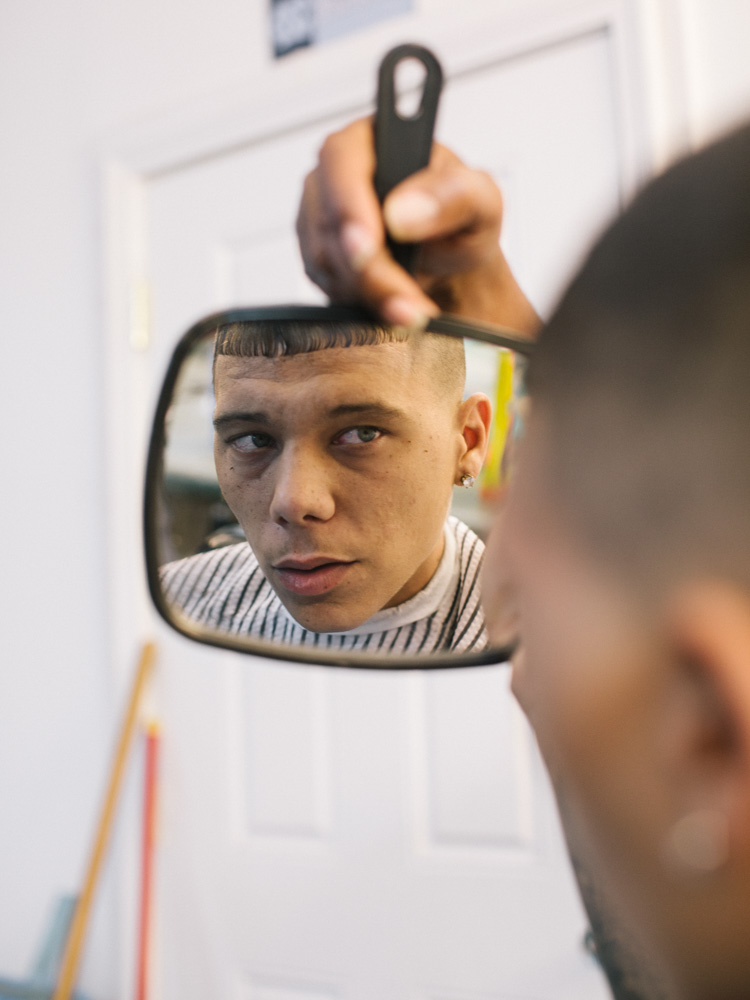
©Maria Strum, Robert looking at himself, Traditionally the people of Robeson County were farmers, they produced tobacco for example, but with globalization it became cheaper to produce tobacco in China and local farmers couldn‘t compete with the price. The rest of the industry has left too, The Converse plant was the largest private employer, with 3000 employees, mainly Lumbee worked at the plant which produced the Chuck Taylor All-Star until it closed in 2001. People are being thrown back on their own resources and are left waiting wondering what to do.
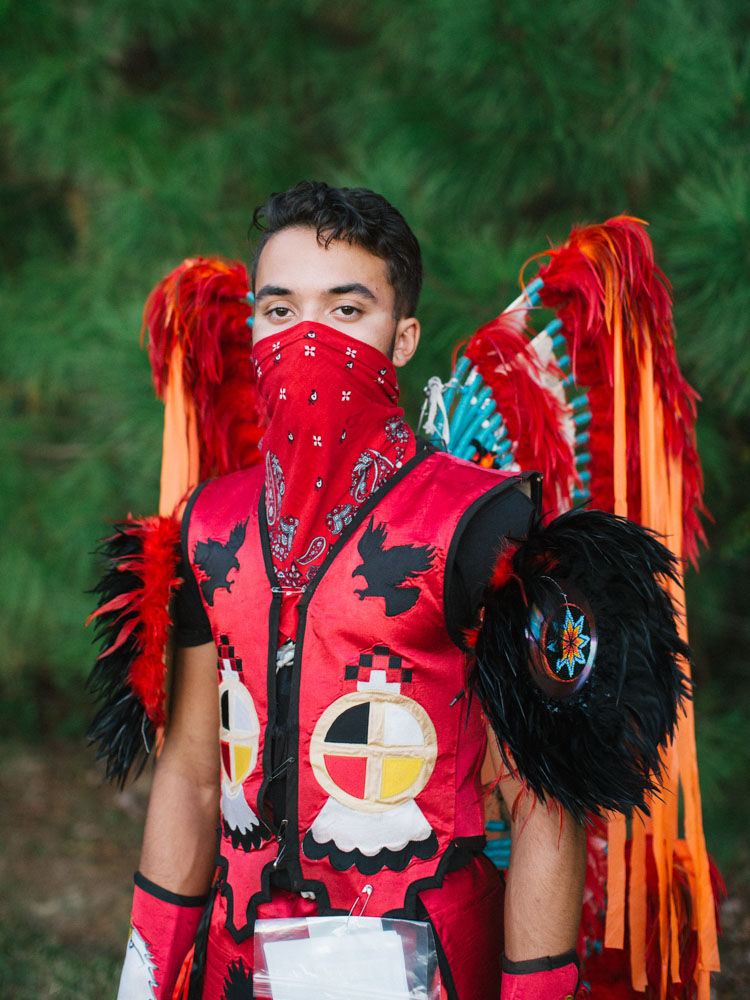
©Maria Strum, Manny, Manny at the Running Waters Pow Wow in Fayetteville, NC. He identifies as Lumbee. He‘s a fancy dancer and he‘s dancing with his bandana covering half his face like this. His uncle Nakoma started a Culture Class in Cumberland County and Manny is attending regularly playing the drums and singing, dancing and teaching as well. There are more Culture Classes popping up now, which is hopeful to see because tribes in the Southeast who have been in contact with Europeans first have lost a lot of their history, not only through assimilation but also through fear, living in the Jim Crow South.
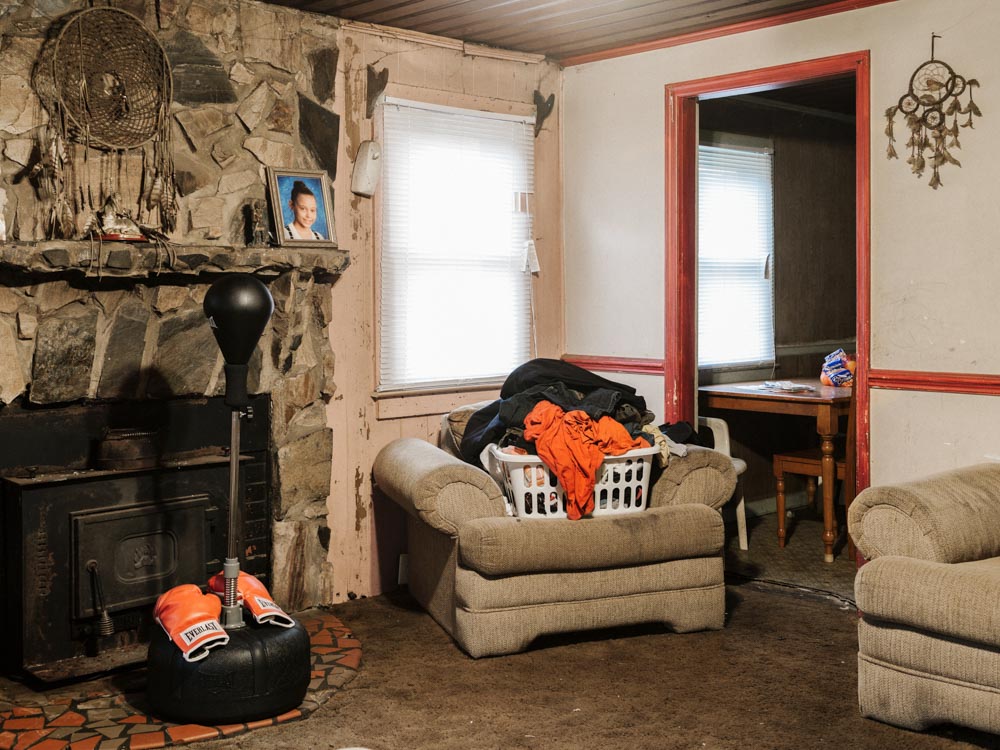
©Maria Strum, Adrian’s house, This is Adrians house in Pembroke, NC. He identifies as Lumbee. You can see two Dream Catchers on his walls, which is also a very prominent symbol in the area and in Native culture today. It‘s originally from the Ojibwe Tribe in the West, but became a pan-native symbol. Adrian got robbed after we took this photo by some other Natives. He doesn‘t have a gun for self defense, because he‘s already been sentenced for cocaine trafficking. Robeson County is one of Americas most violent counties, located along I-95, which is also a historic drug route connecting Miami and New York.
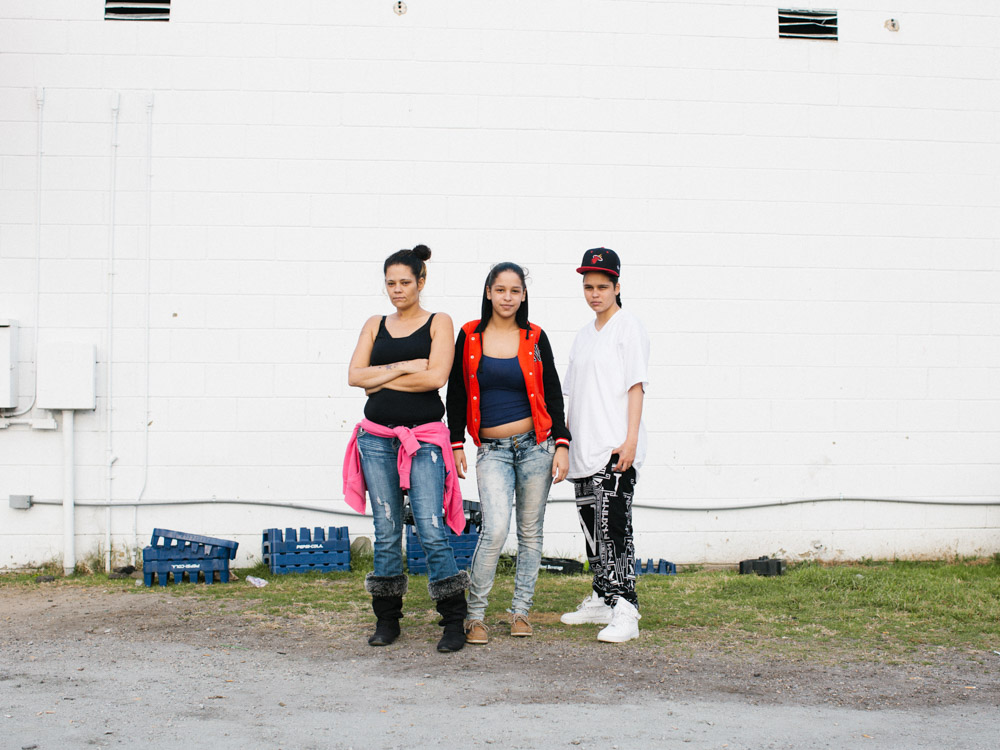
©Maria Strum, At Jeco’s (Carla, Sabra, Alisa), “In the Southeast we’re a matrilineal society. That means we put our women in front of everything, they’re our life-givers. Especially in our Native society, you see displacement, and that‘s how things have just changed. Our women should’ve never gotten to this point, not that it’s their fault, but you know we shouldn’t have let our women get to this point. That’s why this is a powerful picture, because especially here in the Southeast we always honored and put our women in a high place you know. You have to sit back for a second and say “man how did things get so messed up?” Kaya Littleturtle says this while flipping through photos I’ve taken. He’s 24 and leads the Culture Class in Pembroke with Reggie.
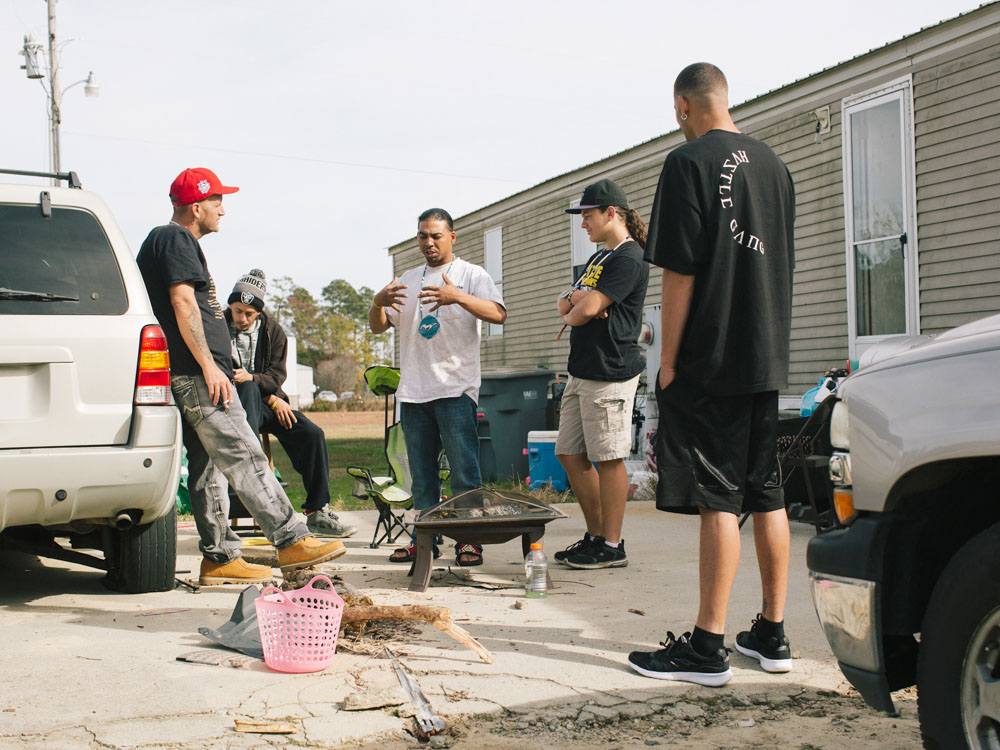
©Maria Strum, Visiting Madas and Chris, Chris (Lumbee) is married to Madas (Wampanoag). Madas‘ older brother Cheenulka and some of his friends from Rhode Island and Massachusetts are hanging out in front of their house in Pembroke after they all returned from the Porch Creek Powwow in Alabama. Many Natives compete in dancing or drumming competitions also as a possibility to earn money.
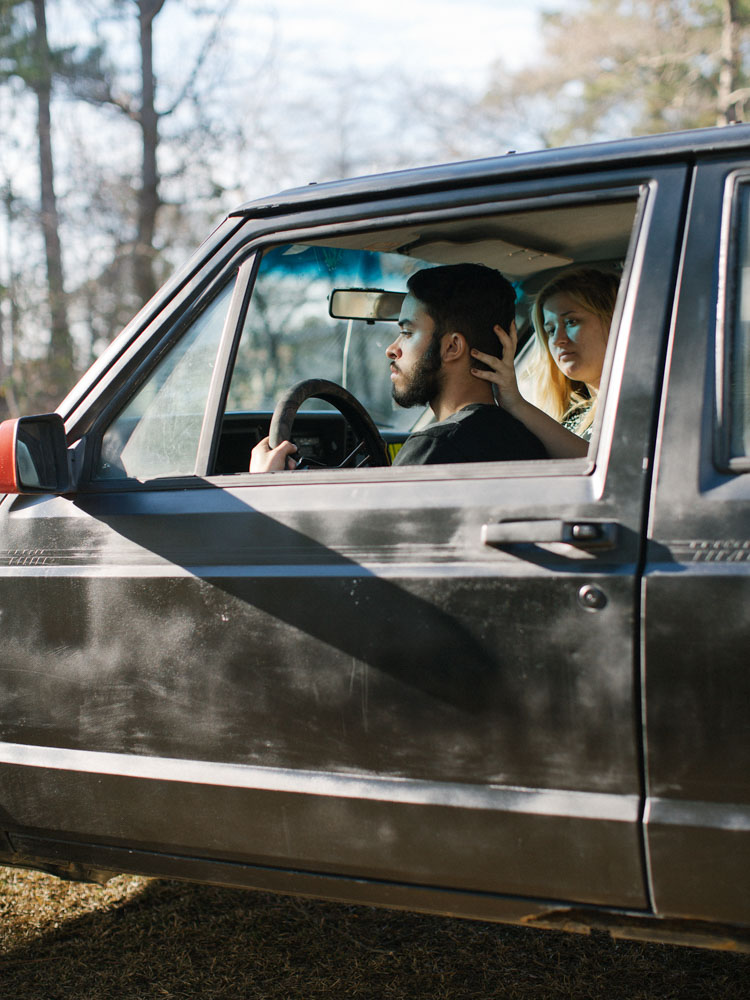
©Maria Strum, Manny and Courtney, Manny and Courtney are sitting in Manny’s car in front of his uncle Nakoma’s house, where Manny is living. Nakoma started a Culture Class in Cumberland County and Manny is attending regularly playing the drums and singing, dancing and teaching as well. The culture classes have gained a lot of growth over the past two years as I have observed. It‘s so dangerous outside and there‘s not much else to do besides going to church, so the teenagers are embracing the new infrastructure the culture class is offering them.
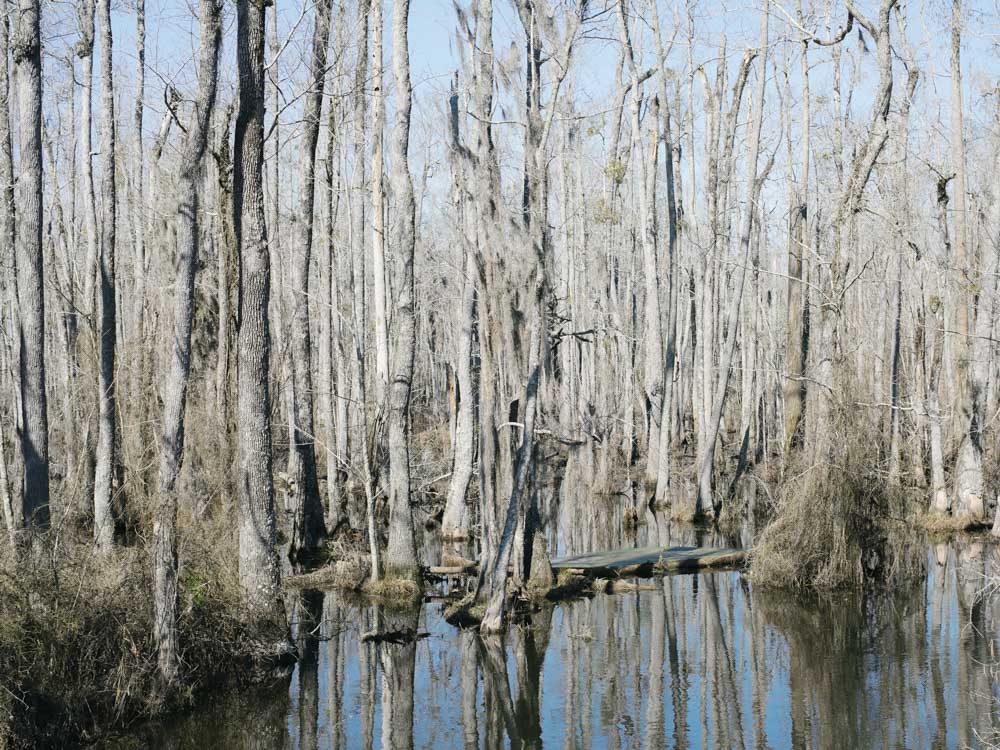
©Maria Strum, Swamp #1, It is said that Henry Berry was hiding in the swamps when he led the resistance in North Carolina during the American Civil War. He is remembered as a Robin Hood figure, particularly for the Tuscarora and Lumbee People, who consider him one of their tribe and a pioneer in the fight for their civil rights, personal freedom, and tribal self-determination. On the cultural site in Pembroke there is an amphitheater where his story was reenacted as a musical. For the past years the cultural site was run down and closed, but in 2016 the Lumbee People held their own big Spring Moon Powwow and the story of Henry Berry Lowry was performed after so many years of pause.
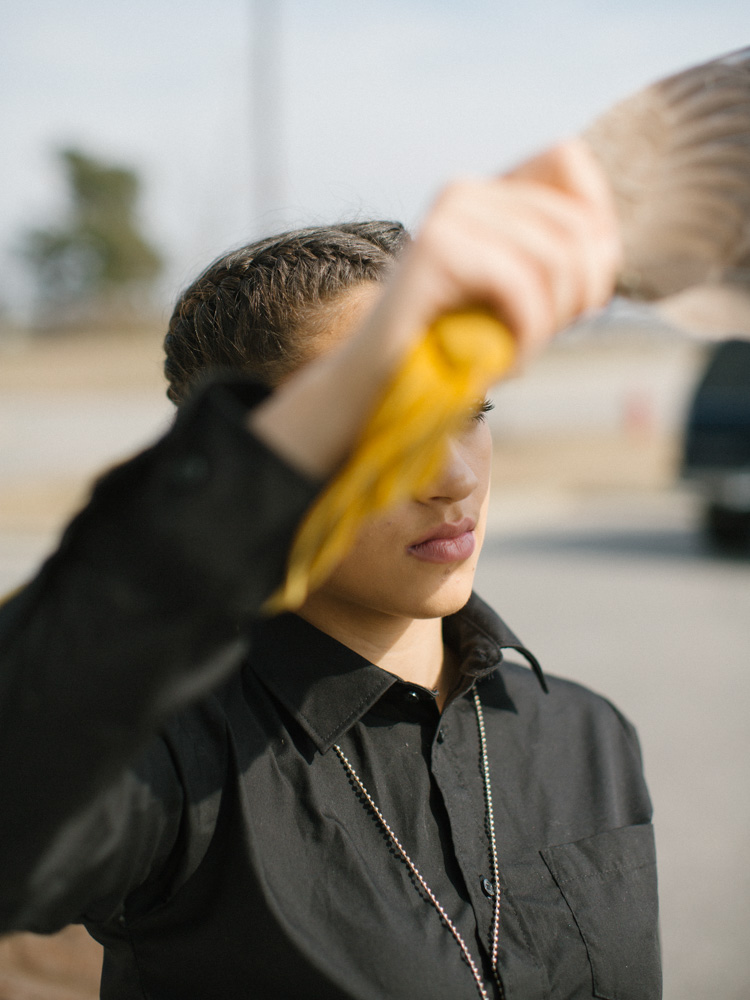
©Maria Strum, Riley, Riley is a jingle dancer and regular attendant of the various Culture Classes there are in the area. She won a beauty pegeant and was Miss NC Queen of Hope. Pageants are popular among Native women and there are a few pageant competitions. In 2017 a Lumbee woman won the title of Miss Indian North Carolina, her name is Kayla Oxendine. Social media plays a big role in Native identity today. Hashtags like #lumbeepride, #nativeboy or #nativestrong are very popular. The Lumbee pride is also particularly stemming from the story of Henry Berry Lowery. It is said that Henry Berry was hiding in the swamps when he led the resistance in North Carolina during the American Civil War. He is remembered as a Robin Hood figure, especially for the Tuscarora and Lumbee people, who consider him one of their tribe and a pioneer in the fight for their civil rights, personal freedom, and tribal self-determination.
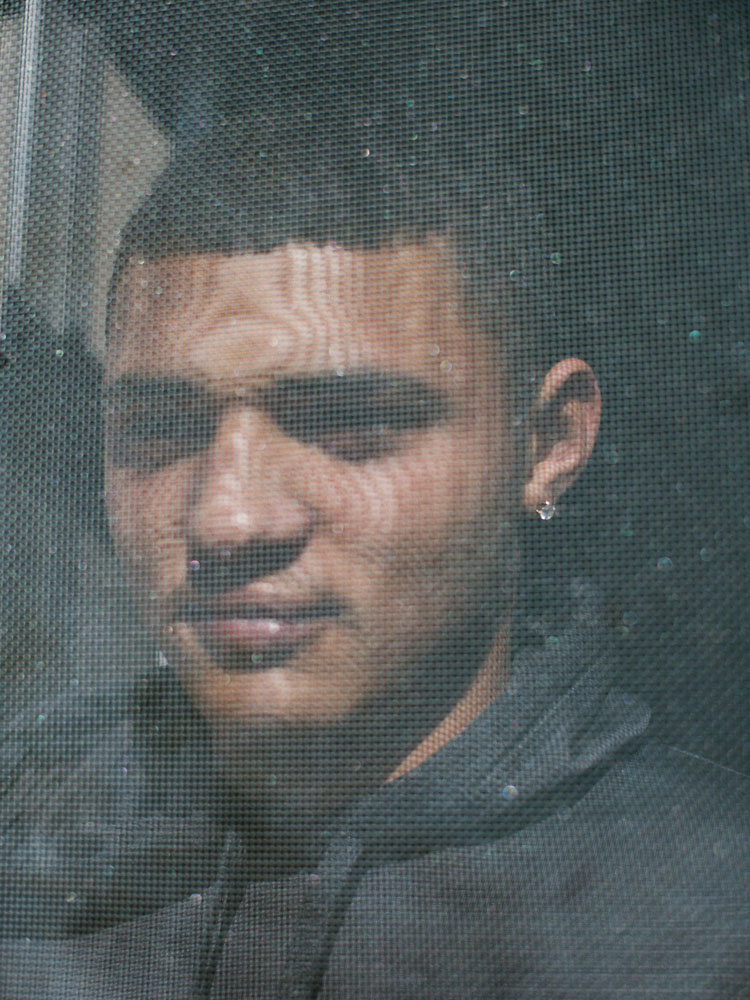
©Maria Strum, Cherokee, Cherokee identifies as Lumbee, he lives in Strickland Heights in Pembroke, a social housing project with a bad reputation. I was waiting for him to go to the barber shop. Men go to the barber almost weekly and probably the only running businesses in Robeson County. Many of these barber shops sustain themselves through drug dealing. Even though the Lumbee name is fairly new, it was voted for in 1952 and passed legislation in 1953, most of the people today only know the Lumbee name.
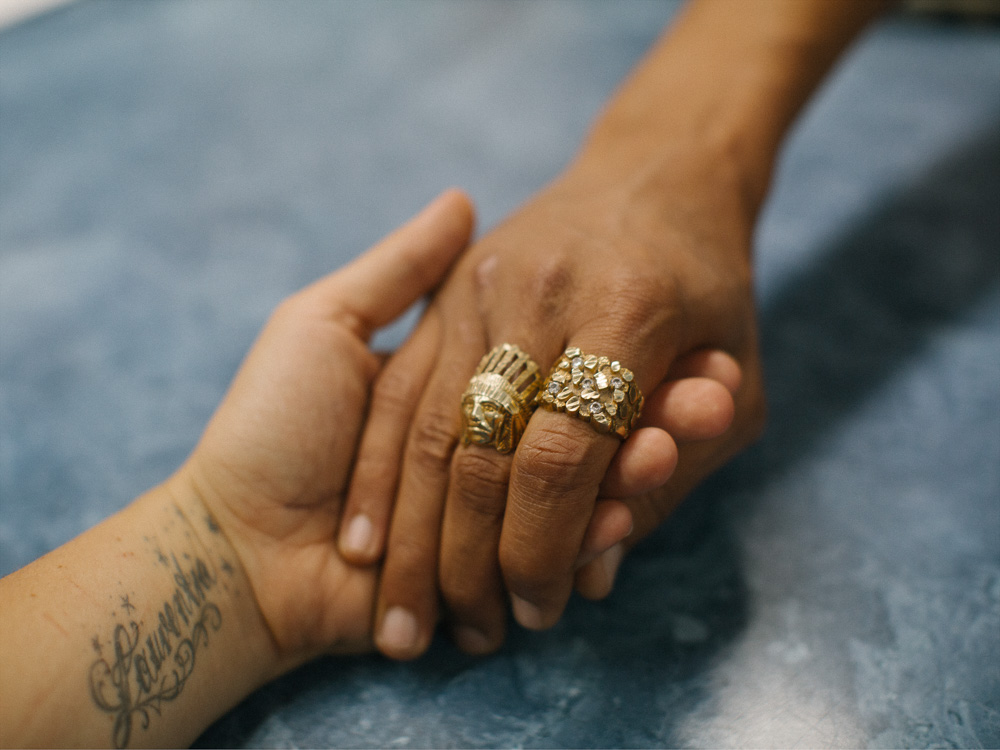
©Maria Strum, Adrian holding my hand, This is Adrian holding my hand. He was happy we took this picture, because he could show this image to the police after being robbed of his rings and cash. Adrian identifies as Lumbee. For some of the people all they know of their Native identity goes back to popcultural symbols or pan native symbols, because that all the people have learned, if they hadn‘t the strength to teach themselves. Robeson county also has a very high rate of food insecurity for example, if you don‘t know where you get your next meal from, there‘s no space for research about your heritage. Adrian was wearing his indian chief ring with pride. His identity actually manifests in symbols like this.
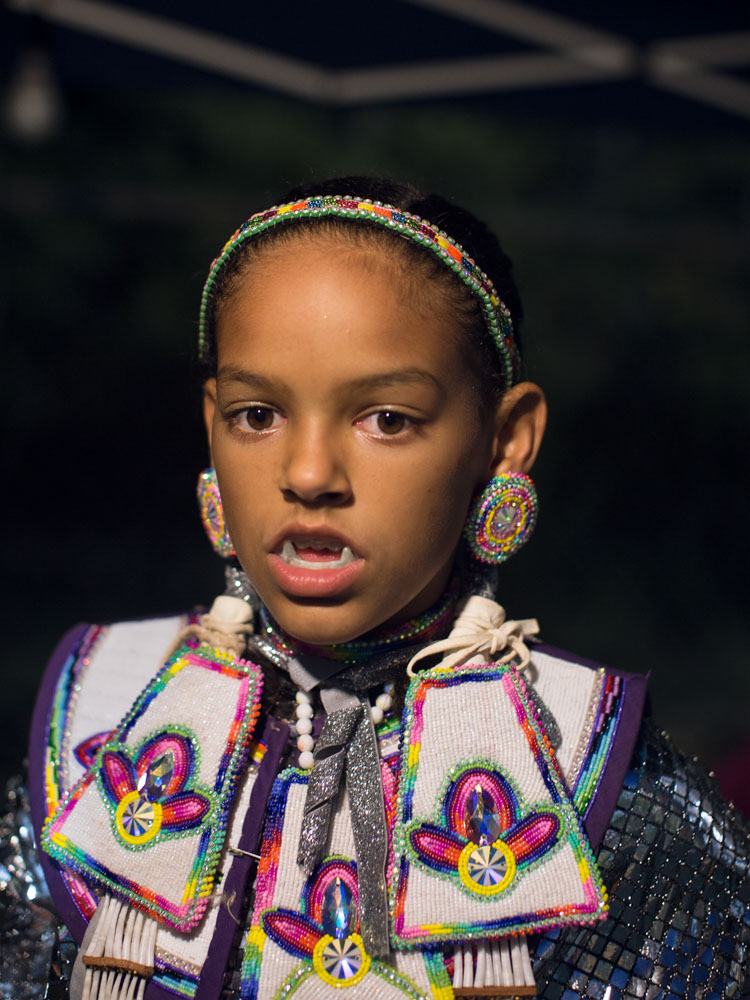
©Maria Strum, Kearsey as a vampire (Tuscarora Nation of North Carolina), I met Kearsey and her mother Tamra at the Running Waters Pow Wow in Fayetteville on Halloween Eve. Kearsey identifies as Tuscarora. The Tuscarora officially fall under the umbrella of the Lumbee. Many Tuscarora don’t identify with the Lumbee name. Many Tribes, recognized or unrecognized have prejudices against the Lumbee. They say for example the Lumbee have lost their history and they don’t have a very strict enrollment policy (in comparison to the Tuscarora, where you’d have to proof 1/4 of bloodline being Native in order to be enrolled). Kearsey and Tamra were dancing among the Lumbee and are setting a hopeful example for these inner tribal conflicts.
Note: Social media plays a big role for Jon-Morgan, Tristin, Stevie, Justin and Jacobi and in the native identity today. Hashtags like #lumbeepride, #nativeboy or #nativestrong are very popular. The Lumbee pride is also particularly stemming from the story of Henry Berry Lowery. It is said that Henry Berry was hiding in the swamps when he led the resistance in North Carolina during the American Civil War. He is remembered as a Robin Hood figure, especially for the Tuscarora and Lumbee people, who consider him one of their tribe and a pioneer in the fight for their civil rights, personal freedom, and tribal self-determination.
Posts on Lenscratch may not be reproduced without the permission of the Lenscratch staff and the photographer.
Recommended
-
The International Women in Photo Association Awards: Lorraine Turci: The Resilience of the CrowMarch 16th, 2024
-
The International Women in Photo Awards: Natalia Garbu: Moldova LookbookMarch 15th, 2024
-
The International Women in Photo Association Awards: Rayito Flores Pelcastre: Chirping of CricketsMarch 14th, 2024
-
The International Women in Photo Association Awards: Alena Grom: Stolen SpringMarch 13th, 2024
-
The International Women in Photo Association Awards: Louise Amelie: What Does Migration Mean for those who Stay BehindMarch 12th, 2024


























